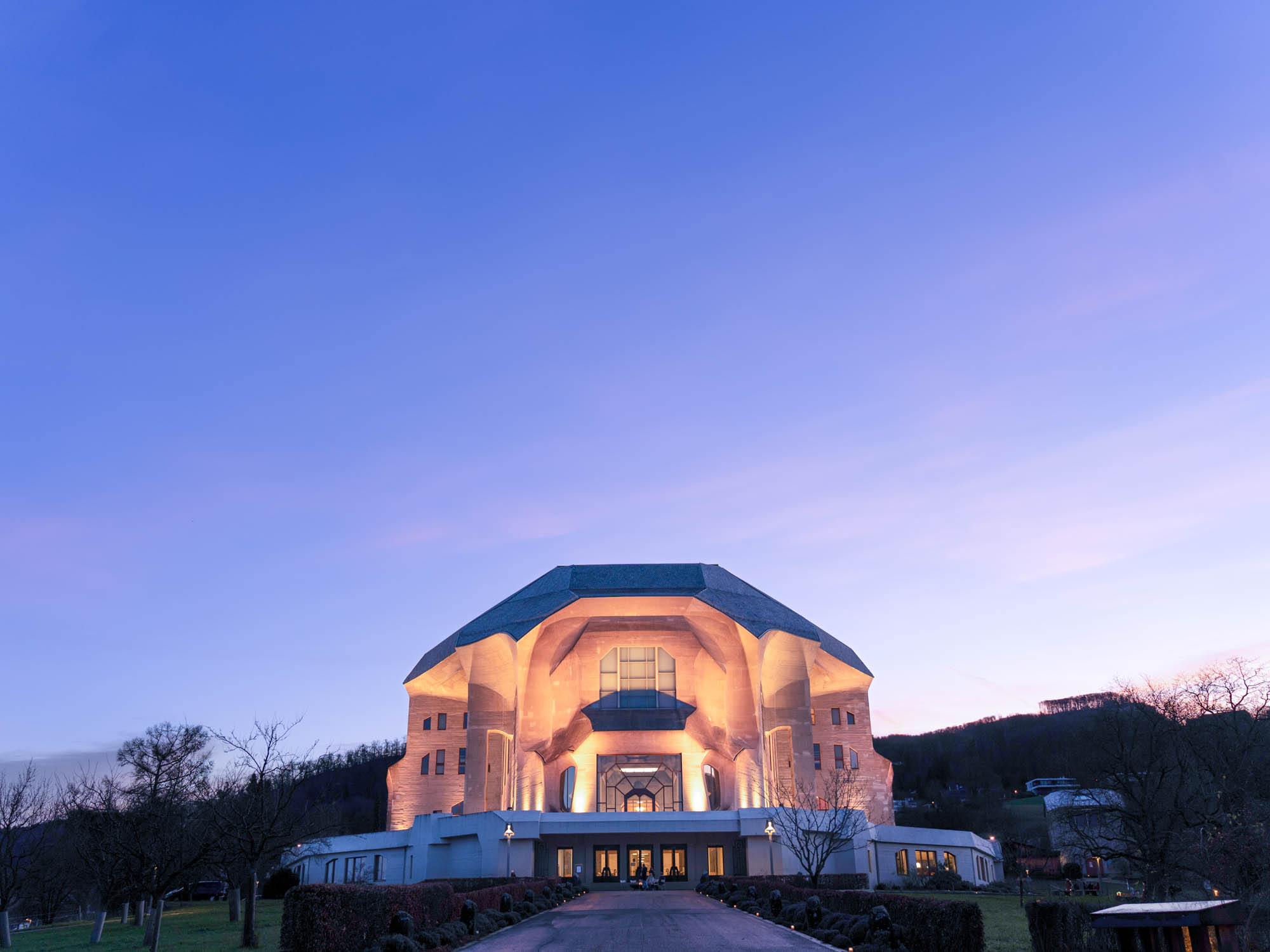Our first editorial conversation after the holiday break took us to the Magic Mountain. We wondered: how many anthroposophical initiatives are located on a hill, prominently elevated above their surroundings? How often do we climb idealistic heights and lose sight of the busy valley below, as our gaze wanders over sun-kissed peaks while things darken beneath us? Coming into Dornach off the highway, we look up from the river plain and the old village to the green hills from which the Goetheanum seems to rise like a spiritual rock. Seeing it from this perspective, I am surprised, every time, by its sheer size, its immensity in this environment. I know the building up close so well that by now, its nooks and crannies seem homey to me. But viewed from the valley, at a certain distance, I can understand the overwhelm and, in today’s times, perhaps the alienation it triggers. I imagine that pilgrims in the Middle Ages had a similar experience when they stood in front of a huge cathedral like Chartres in France for the first time. But the size triggered something different in their souls than in ours, in a time when we want to experience ourselves as individuals. If the Goetheanum is to have an effect as a worldwide impulse, it is time for a new reformation: not just Latinizing but listening and learning to speak many languages. It is time to build bridges out of interest.
*Translator’s note: The Magic Mountain (Der Zauberberg), a 1924 novel by Thomas Mann, is considered to be one a highly influential work of twentieth-century German literature.
Translation Laura Liska
Photo Xue Li













i am aware of the comparison , Although I have only read the Magic Mountain by Thomas Mann in English translation, my German friends tell me that the original is much better, It is, I think my favourite novel. But I have never thought about the Goetheanum in the same way. The spiritual instruction and learning at the Goetheanum is an entirely conscious process, quite unlike that undertaken by Hans Castorp and I never met anybody at the Goetheanum who remotely resembled Naphta (Fortunately) or the utterly delightful Settembrini.or the truly awesome(literally) Hofrat Behrens.All that said, the Swiss alps must be a remarkable place and Dornach, whilst not in the alps is again a wonderful translation in space from the broad and arid plains of Australia.